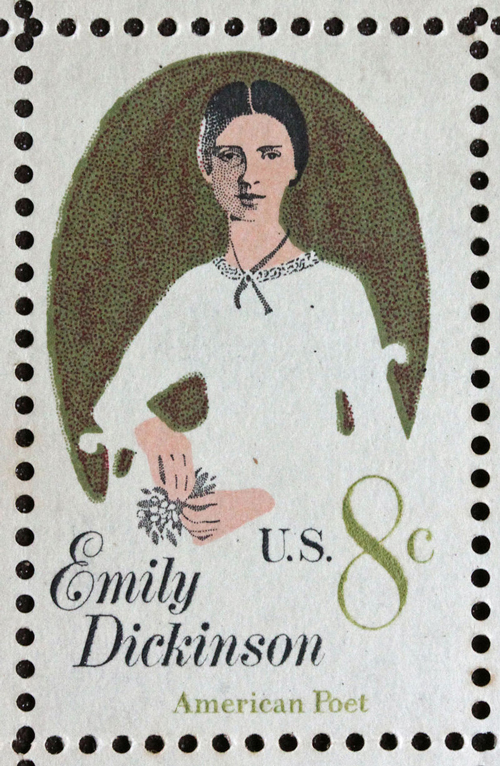 |
Emily Dickinson |
Emily Elizabeth Dickinson was born on December 10, 1830, in Amherst, Massachusetts. Her grandfather was the founder of Amherst College. Her father was the treasurer of the college and a lawyer. He also was involved in politics and served in the General Court of Massachusetts, the State Senate, and the United States House of Representatives. Emily was distant from her mother and described her as not someone “To whom you hurry when you are troubled.”
Emily was well educated considering she was a woman living during this time. She went to school at Amherst Academy, which is now Amherst College, for seven years. Afterward, she attended Mount Holyoke Female Seminary for one year.
Dickinson was withdrawn and introverted. Emily never married, but she did write love poems and letters. During her teenage years and twenties, several of her friends and family members passed away, which contributed to her fascination with death.
Emily started writing when she was a teenager, without her family’s knowledge. She was inspired by Leonard Humphrey, the principal of Amherst Academy, and a family friend named Benjamin Franklin Newton. Newton introduced her to the poetry of Ralph Waldo Emerson. Emily used her knowledge of the Bible, classical myths, and Shakespeare for allusions and references in her poetry. She also used popular church hymns.
In the mid 1860s, Emily became even more secluded. She rarely left the house and hardly ever had conversations with people face-to-face. This is the time when she produced some of her best work, creating small bundles of verse known as fascicles.
On May 15, 1886, Emily Dickinson died from kidney disease at 55 years old. Upon her death, she instructed her sister, Lavinia, to burn her writings. The house where she was born is now a museum.
Not much of Emily’s work was published at the time of her death. The few pieces that were published were edited to follow the strict standards of society at the time. Most of her original use of syntax and form had been lost. After Emily’s death, her sister, Lavinia Dickinson, discovered hundreds of poems that she had written throughout her life that Emily had never mentioned. Lavinia realized the value and quality of the work and became obsessed with having it published. In 1890, the first volume of these works was published. It wasn’t until 1955 that others were published in The Poems of Emily Dickinson. Emily became known for her emotional and compressed verse, which influenced 20th century poetry. Her poems mention robins, bees, winter light, household items, and domestic duties. Her lyric poems mention particular moments in her life, scenes, and moods. She wrote about topics such as nature, love, immorality, death, faith, doubt, pain, and the self.